Five new gecko species discovered
Endemic and highly localized
by Sajitha Prematunge
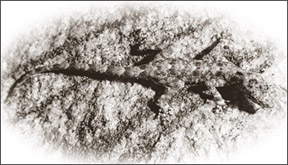
Cnemaspis alwisi |
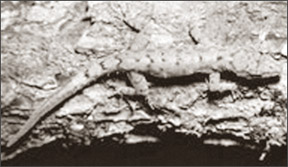
Cnemaspis kumarasinghei |
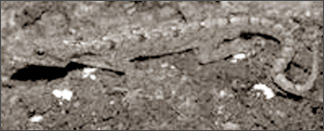
Cnemaspis molligodai |
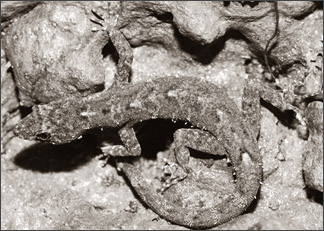
Cnemaspis samanalensis |
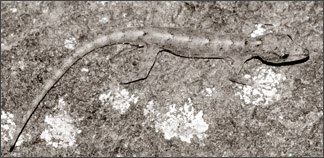
Cnemaspis Retigala |
Five new gecko species of the Cnemaspis genus was discovered by the
late Dr. Amith Munindradasa in collaboration with L. J. Wickramasinghe (IUCN
- The World Conservation Union, Sri Lanka Country Office) and published
in "Zootaxa Review of the genus Cnemaspis Strauch, 1887 (Sauria:
Gekkonidae) in Sri Lanka with the description of five new species (31
May 2007)."
Unfortunately this was also to be Dr. Munindradasas final discovery.
The late Dr. Amith Munindradasa will be very much missed by every one he
worked with. Although an electrical engineer by profession, he had many
passions. He worked in the areas of semiconductor materials, wildlife
related electronics, mechatronics, automotive electronics and acoustics.
In addition he actively participated in Wild Life Conservation
activities in Sri Lanka and was an ardent photographer.
His major projects concerning wildlife conservation were developing
amphibian acoustic soft ware and developing shock emitting GPS collars
for wild elephants. The new species are endemic and highly localized.
Therefore the need to preserve their existence is of utmost importance.
Cnemaspis alwisi is the biggest of the five species, found in
Dolukanda, Retigala and Maragala mountains and Nilgala areas. It's dark
grey in colour and uses camouflage to blend in with the lichens on rock
surfaces among which it lives, by changing the colour patterns of its'
skin.
It has a depressed, narrow and long head distinct from its neck. C.
alwisi is named after the late Mr. Lyn De Alwis, a former Director of
the National Zoological gardens and the founder of the Young Zoologists
Association, for the research work he conducted that lead to the
initiation of wildlife conservation of Sri Lanka. The Sinhala, Tamil and
English names for the species are Alwisge diva huna, Alwisin pahal palli
and Alwis's day gecko respectively.
Cnemaspis kumarasinghei is a small yellowish brown gecko found in
pairs of males and females on the trees and hilltops of the Maragala
area.
This particular species is named after the late Mr. Siril
Kumarasinghe wildlife ranger Yala National park, who paid with his life
at the hands of poachers, for his immense devotion to the field of
wildlife conservation. The Sinhala, Tamil and English names for the
species are Kumarasinhage diva huna , Kumarasinghevin pahal palli and
Kumarasinghe's day gecko respectively.
Cnemaspis molligodai is found in Waratalgoda, Kalugala, Kukule ganga,
Kanneliya-Nakiyadeniya, Kottawa, Oliyagankele, Gileemale, Hunuwela,
Sinharaja-Kudawa and Sinharaja-East areas. Living on the split barks of
isolated trees in colonies of 30/40 C.molligodai has a slender, long and
depressed body and a depressed, narrow and long head.
Its skin is reddish brown with yellow and black dots scattered across
its head. It's named after Hayasinth Molligoda for his service and
commitment to the conservation of Hepetofauna in the country. Its
Sinhala, Tamil and English names are Molligodage diva huna ,
Molligodavin pahal palli and Molligoda's day gecko .
Small and light brown Cnemaspis retigalensis can be found on the
hilltops and lower 2m trees and rocks of the Weweltenna area.
Cretigalensis is named after "Retigala" the forest from where it was
discovered. Its Sinhala, Tamil and English names are Retigala diva huna
, Retigala pahal palli and Retigala day gecko .
Lastly Cnemaspis samanalensis found in the Ratnapura district is a
medium sized, blackish brown gecko. This species is named after the "Samanala
region" the forest from where it was found. Its Sinhala, Tamil and
English names are Samanala kandu diva huna , Sivanolipathamalai pahal
palli and Samanala day gecko .
The newly discovered Cnemaspis species are significant for its high
endemicity, which is believed to be due to the geographical isolation of
the island. The extinction of highly endemic species as such from Sri
Lanka means the extinction off the face of the earth.
These species are also highly localized; in fact some of these
species are restricted to different climatic zones, in which case the
elimination of a certain species, from just the wet or dry zone, could
cause its extinction.
Each one of these species contributes to the rich heritage of
biological diversity of Sri Lanka. But unfortunately, activities such as
metal crushing and deforestation have caused a major loss of habitats,
hindering the very existence of these rare species.
In order to ensure the further existence of these species prompt
measures must be taken to protect their highly sensitive habitats.
Because the contribution of all the people these new species are named
after them, and the work conducted by Dr. Amith Munindradasa would be
love's labour lost if we are incapable of preserving their legacy. After
all, extinction does mean forever.
[email protected] |
